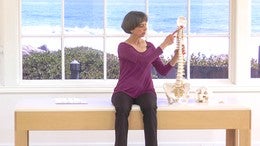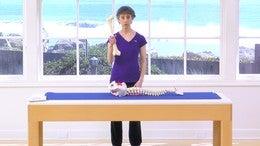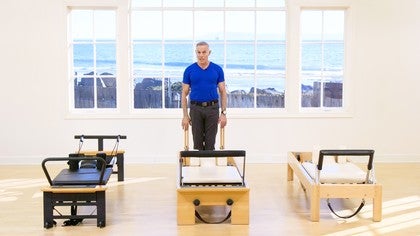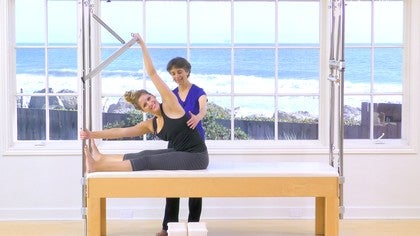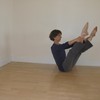Description
Refining Pilates: Attaining Agile and Graceful Movement
It is often thought that gracefulness is inborn; you either have it or you don’t, or it is only the domain of dancers. But grace and agility, and the deeper strength they create, can be achieved by anyone! In this workshop, Ruth Alpert will define and explore the elements that produce graceful movement in Pilates exercises.
Objectives
It is often thought that gracefulness is inborn; you either have it or you don’t, or it is only the domain of dancers. But grace and agility, and the deeper strength they create, can be achieved by anyone! In this workshop, Ruth Alpert will define and explore the elements that produce graceful movement in Pilates exercises.
Objectives
- Discern the difference between strength and tension
- Discover more freedom and agility in your own body
- Develop your ability to see with accuracy
- Feel flow and grace in Pilates exercises on equipment and Mat work
What You'll Need: Cadillac, Moon Box
About This Video
(Pace N/A)
May 29, 2015
(Log In to track)
Workshops: Free Workshops
Comments
Skip to Latest
Really appreciate your compassion and sensitivity to your students question about being graceful. This is such an important and interesting topic. I am also a larger and grace challenged woman and when my teacher said I was a "good mover" I became like DeNiro in Taxi Driver. "You talkin' to me?" It meant a lot and is one of the reasons I love this work so much. Thank you, Ruth. Love your classes and workshops.
9 years ago
Thank you Angela. Your comments move me, stir my heart. I bow to your teacher!
9 years ago
Thank you Ruth, an observer described Pilates clients as "Butterflies". It is an honor to receive such a comment. I thank The Method for allowing us to give the gift of "grace" through thoughtful movement.
9 years ago
Thanks Janie!
Diane - was feeling a bit awkward about correcting on camera so your feedback is really good to hear!
Diane - was feeling a bit awkward about correcting on camera so your feedback is really good to hear!
9 years ago
Hi Ruth-thank you for a great tutorial- yes, I agree with the above comment: I like seeing corrections as well, because I can better understand the intention of the exercise and why that particular alignment is necessary to get the most out of the movement. As a new teacher, it's invaluable information. I'm constantly learning, even while I'm teaching (My favorite saying is "you never learn anything by doing it right")
9 years ago
1-10 of 31
You need to be a subscriber to post a comment.
Please Log In or Create an Account to start your free trial.
